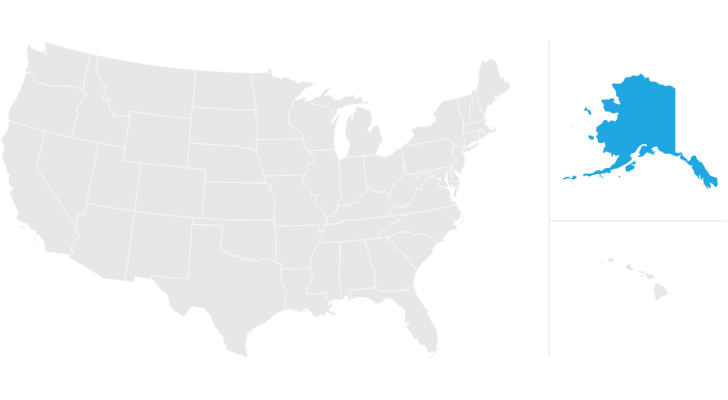Establishing a living trust in Alaska offers a practical way to manage your assets during your lifetime and ensure they’re distributed according to your wishes after you pass away. Unlike wills, living trusts can help your beneficiaries avoid the time-consuming and potentially costly probate process that’s common in Alaska. This legal arrangement allows you to maintain control of your property while you’re alive and capable, while designating how these assets should be handled if you become incapacitated or after your death. Alaska’s trust laws provide several advantages, including strong asset protection provisions and flexibility in how you structure your estate plan.
If you’d like professional assistance in your estate planning process, you may want to consider engaging a financial advisor.
Creating a Living Trust in Alaska
Alaska offers unique advantages for those creating a living trust. The state has pioneered progressive trust legislation, making it an attractive option for estate planning. This is how you’ll form a living trust in The Last Frontier:
- Select the trust that best suits your current situation. You can either choose a single trust or a joint trust. If you’re an individual, a single trust may be a better option. Couples typically use joint trusts because they allow them to combine their shared assets into one trust.
- Take inventory of your property and assets. You can store things like stocks, mutual funds, property, documents of ownership and other investments in your living trust. Take this time to gather documents like housing deeds and car titles.
- Select a trustee to oversee your trust. You can either choose someone or you can act as the trustee before you die. If you decide to act as the trustee, you’ll have to elect a successor trustee to manage your assets after your death.
- Create the trust document. You can either use a computer program or a lawyer for this.
- Sign the trust document in front of a notary public.
- Fund the living trust by transferring any desired property or assets into it. You can do this step on your own, or you can consult a lawyer for legal guidance.
What Is a Living Trust?
A living trust is a legal agreement that allows you to transfer management of your assets to a trustee either before or after your death. The living trust goes into effect as soon as you form it, and it lets you name any beneficiaries to whom your property will be distributed. Typical assets you can transfer into your trust include property, investments, family heirlooms, bank accounts, automobiles and other titled assets.
There are two types of living trusts: revocable living trusts and irrevocable living trusts. Revocable trusts give the trust creator, or grantor, full control over assets and allow them to make changes or even cancel certain provisions altogether. Irrevocable trusts differ because they’re permanent.
Once you’ve formed an irrevocable trust, you can’t make any modifications or cancellations unless your beneficiaries grant permission. Grantors essentially lose control of the trust after they’ve transferred assets into it.
How Much Does it Cost to Create a Living Trust in Alaska?
You can form a living trust in two ways: you can hire a lawyer or you can set up the trust through an online program. Hiring a lawyer is less risky because you’ll have the guidance of a professional, but it can also be more costly. If you hire a lawyer, you’ll spend more than $2,000, while using a computer program will run close to a few hundred dollars.
The complexity of your estate significantly impacts your costs. Multiple properties, business interests, or special needs provisions will increase attorney time and fees. Additionally, married couples creating joint trusts may pay more than individuals, though usually less than the cost of two separate trusts.
Why Get a Living Trust in Alaska?

When it comes to estate planning, many people create living trusts to avoid the probate process. During the probate process, court officials determine whether the last will of a deceased person is authentic. Officials also determine asset values and distribute them to beneficiaries after any remaining taxes or bills have been paid. The process can take many months, but some states use a Uniform Probate Code to simplify the process. Alaska uses the Uniform Probate Code, so you may want to consider using the probate process instead of a living trust.
If you decide to form a living trust instead, you’ll still have some notable advantages. For one, you can determine the exact date you want certain property to be transferred to your beneficiaries. You’ll also still have your wishes carried out if you become mentally ill or incapacitated.
Who Should Get a Living Trust in Alaska?
Living trusts offer Alaskans a powerful estate planning tool that can help avoid probate and provide greater control over asset distribution. Unlike wills, living trusts take effect immediately and continue operating during incapacity and after death. For Alaska residents with significant assets or specific privacy concerns, a living trust provides advantages that a simple will cannot match.
Residents with large or small estate plans can form a living trust in Alaska, but you should still consider the probate process before forming one. Since Alaska uses the Uniform Probate Code, the probate process could be a better option. The state also offers a simplified probate process for small estates of less than $50,000 and vehicles worth less than $100,000.
Nonetheless, you’ll still need to use an estate plan if you’d like to protect your assets after you’ve died. Even if you use a living trust, you’ll still likely need a will. But how do the two differ? We look further into the difference between living trusts and wills below.
Living Trusts vs. Wills
If you’re convinced a living trust can improve your estate plan, a will is still good to have. With a living trust, you can only transfer certain property into your trust, but a will allows you to account for other assets you couldn’t include in your trust. A will can also do the following:
- Name an executor
- Offer instructions for taxes and debt
- Establish guardianship for minors
- Select managers for the children’s property
This chart outlines and compares living trusts and wills and the capabilities of both estate planning documents:
Living Trusts vs. Wills
| Living Trusts | Wills | |
| Names a property beneficiary | Yes | Yes |
| Allows revisions to be made | Depends on type | Yes |
| Avoids probate court | Yes | No |
| Requires a notary | Yes | No |
| Names guardians for children | No | Yes |
| Names an executor | No | Yes |
| Requires witnesses | No | Yes |
Living Trusts and Taxes in Alaska
You should research whether your state has estate taxes or inheritance taxes if you’d like to form a living trust. Alaska doesn’t have an estate tax. Federal estate taxes only apply to wealthy individuals. For 2025, the threshold for federal estate taxes is $13.99 million for individuals and $27.98 million for married couples.
Alaska doesn’t have an inheritance tax either, but some states charge residents these taxes if they inherited property from someone who lived in a state with inheritance tax laws.
Bottom Line

Creating a living trust in Alaska may seem complex initially, but with proper guidance and attention to detail, you can establish a robust estate plan that protects your legacy and provides peace of mind for you and your loved ones. Remember that while you can create a living trust on your own using online resources, consulting with an estate planning attorney familiar with Alaska’s legal framework often proves invaluable. They can help customize your trust to address your unique circumstances and ensure all necessary documents are properly executed.
Estate Planning Tips
- Consider working with a financial advisor to help you create or modify an estate plan. They have the expertise to help you with all of your financial planning needs. Finding a financial advisor doesn’t have to be hard. SmartAsset’s free tool matches you with vetted financial advisors who serve your area, and you can have a free introductory call with your advisor matches to decide which one you feel is right for you. If you’re ready to find an advisor who can help you achieve your financial goals, get started now.
- If you start estate planning on your own, regardless of the dangers of DIY estate planning, make sure you start with a checklist to ensure you’re tackling the right things.
Photo credit: ©iStock.com/DNY59, ©iStock.com/Oleksii Liskonih
